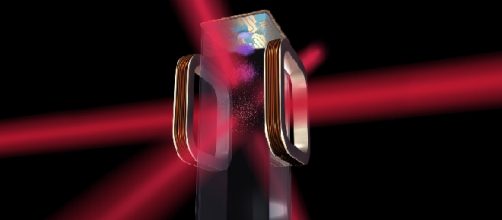Ultra cold temperatures
Scientists working at the Cold Atom Laboratory (CAL) based at NASA´s Jet Propulsion Laboratory in Pasadena California produced the first extremely cold quantum gas from potassium and rubidium. In 2014, scientists created ultra-cold condensates from rubidium and now, they utilized rubidium to lower potassium-39 down to millionths of a degree Kelvin close to absolute zero.
This achievement marks an important step in Bose-Einstein condensates on earth; as the next to this step is to recreate the experiment with the two same gases on space, where scientist expect to cool atoms to more extreme temperatures close to a billionth of a degree above absolute zero.
Bose-Einstein condensate
This is a state of matter in which a diluted mass of bosons is cooled to temperatures that get close to absolute zero (0 Kelvin or -273.15 °C). At this ultra-low temperatures, matter occupies the lowest accessible quantum state, at which the atoms act surprisingly.
This may allow researchers to expand their knowledge in fundamental physics. Ultra condensed atoms in the microgravity setting may be useful as advanced quantum sensors; for sensitive measurements, including revolutions, gravity and magnetic fields.
Experiment limitations on earth
During experiments with Bose-Einstein condensates, scientists are limited by the gravity of the earth, as this form of matter tends to descend to the bottom of any piece of equipment utilized to analyze it.
In outer space, where less gravity is present, these elements may be studied with for longer spans of time.
Cold atom laboratory
The research laboratory is intended to operate aboard the International Space Station. Onboard, CAL will function under microgravity environment which will allow the observation of quantum phenomena. CAL will allow numerous scientific researchers to conduct studies in outer space.
CAL is schedule to be launched on April 2017. On this date it will also be installed on board the International Space Station. Once installed, it will help conduct experiments on the use of laser-cooled atoms for forthcoming quantum sensors.

